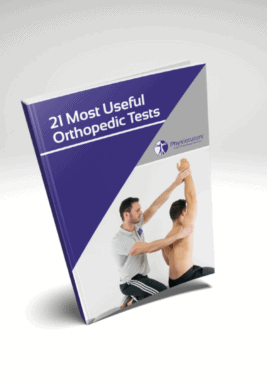Learn
Mill’s Test | Tennis Elbow Assessment | Lateral Epincondylalgia
Lateral Epicondylalgia describes pain due to tendinopathic changes in the extensor carpi radialis brevis muscle as a result of repetitive strain commonly from manual labor or racket sports such as tennis, which is why it’s also known as tennis elbow. While tests such as the Mills Test are done daily in clinical practice, diagnostic accuracy studies on assessment tests for lateral epicondylalgia are lacking to this day, which is why the clinical value remains questionable.
Before we start the test demonstration, if you want to learn more about the differential diagnosis of tennis elbow such as radial nerve injury and other common elbow conditions, check the link in the video description for Thomas Mitchell’s online course on the elbow, wrist, and hand.
To conduct the test, the patient is in standing or sitting position with the elbow in flexion. Use one hand to stabilize the forearm while palpating the lateral humeral epicondyle with the thumb. Then, passively pronate the forearm, flex the patient’s wrist and extend the elbow maximally.
This will place tension on the extensor carpi radialis brevis with the aim to exacerbate symptoms.
The test is positive in case the patient’s familiar sudden lateral elbow pain is reproduced.
21 OF THE MOST USEFUL ORTHOPAEDIC TESTS IN CLINICAL PRACTICE

Other common tests to assess Tennis Elbow are the Cozen’s Test and the Maudsley’s Test.
Like what you’re learning?
BUY THE FULL PHYSIOTUTORS ASSESSMENT BOOK
- 600+ Pages e-Book
- Interactive Content (Direct Video Demonstration, PubMed articles)
- Statistical Values for all Special Tests from the latest research
- Available in 🇬🇧 🇩🇪 🇫🇷 🇪🇸 🇮🇹 🇵🇹 🇹🇷
- And much more!








